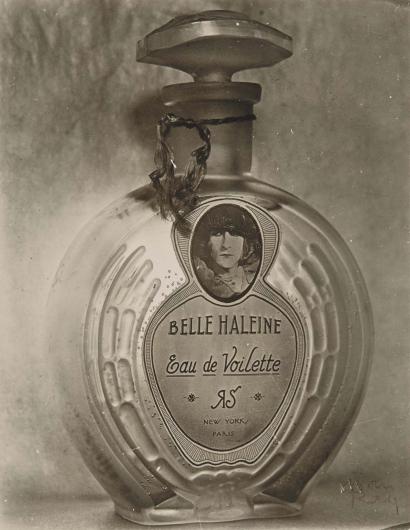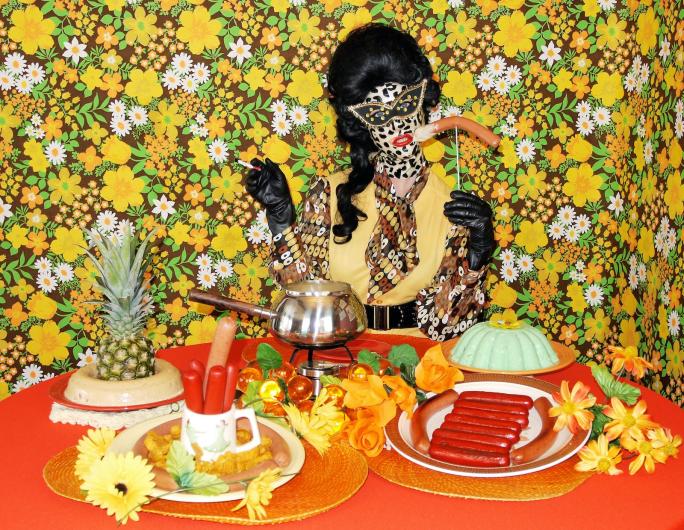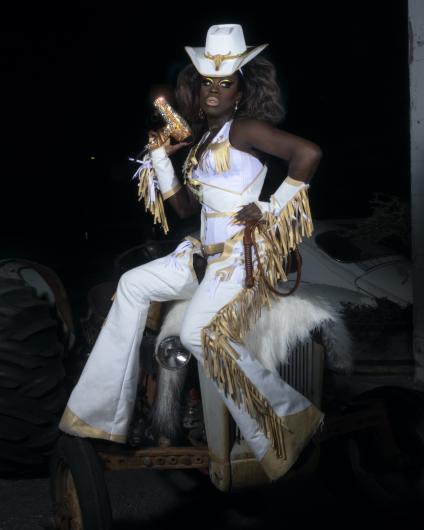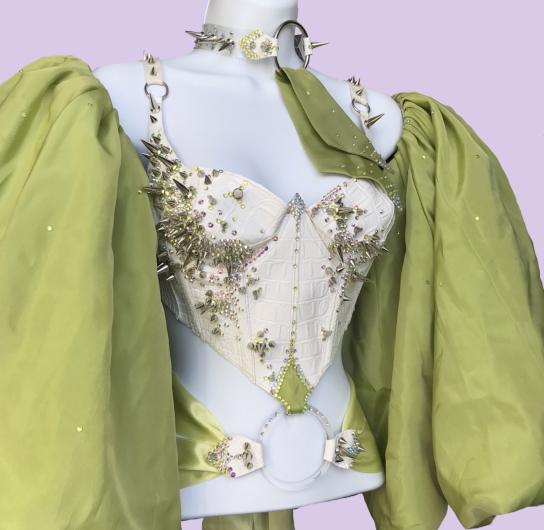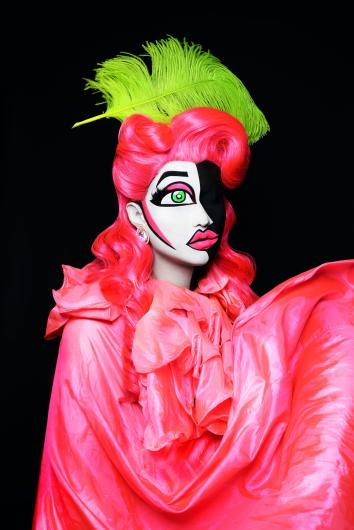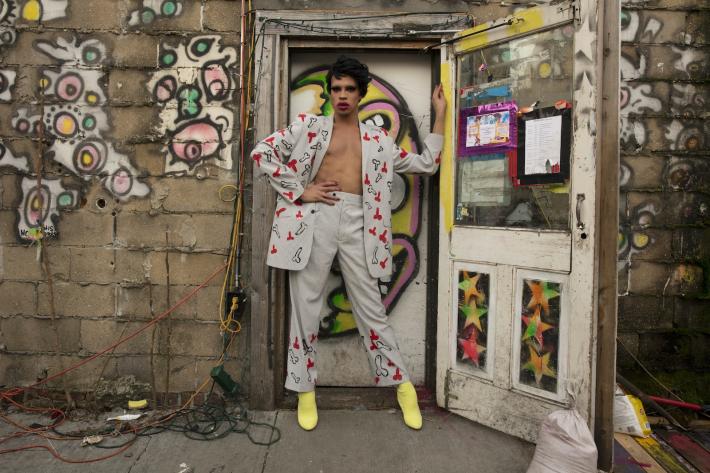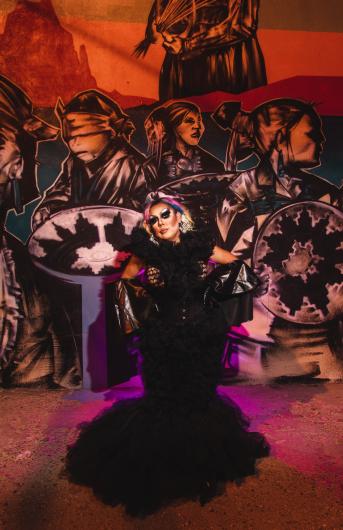
Miss Meatface, Domestic Dame, 2016.
In the RuPaul’s Drag Race: Season 13 finale, when Gottmik stepped out in a red Keith-Haring-meets-David-Bowie pantsuit, it felt like a brilliant exclamation point—emphasizing that the shared space between drag and fine art was reaching its apotheosis.
Drag and art have been mutually intertwined for centuries, long before the term existed, through drag queens and kings who are also practicing artists; artists who incorporate drag into their work; and, of course, drag queens, makeup artists, and designers whose work embodies all the transcendence, conceptual power, emotion, and meticulousness associated with great art.
As an art form, drag typically achieves two major things—visual illusions which subvert societal notions of a gender binary and escapism via an alter-ego that often manifests in a new level of awareness and access to one's own personal power. As American states levy an unprecedented amount of anti-trans bill proposals, the art form is gaining traction both in popularity and importance.
We’ve rounded up artists who—whether working in drag or drag adjacent—have contributed to the elevation of drag within the social conscious, from the performance-based photography of Miss Meatface to the otherworldly transformations of stars like Yvie Oddly and Kim Chi.




